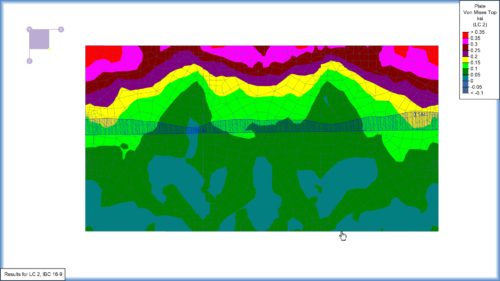

It employs an elastic beam column member to model the pile and nonlinear horizontal springs to represent the soil reactions. In that case, and, where = the shear modulus of the soil.įor nonlinear analyses the p-y method is the most commonly used in this category. As a result it is common to use the values corresponding to a dimensionless frequency of 0.3 for smaller frequencies. Unfortunately the horizontal term tends to zero at a zero frequency representing the static case. The corresponding horizontal and rotational springs per unit of length along the pile are functions of a dimensionless frequency, where = the frequency in radians/second, = the radius of the pile, and = the shear wave velocity of the soil. For dynamic problems Novak has proposed the use of Winkler foundation coefficients based on Baranov’s equations for in plane and out of plane vibrations of a disk.

The main difference between the different Winkler foundation models available is in the selection of the foundation stiffness coefficients. When the elastic stiffness of the foundation can be considered constant with depth one can even obtain simple closed form solutions for the pile head stiffness and flexibility. Winkler foundation models are popular because of their simplicity and reasonable accuracy. Also the behavior of the soil, pile, and soil-pile interaction may be considered as linear or nonlinear. In each category the analysis may be static (monotonic or cyclic loading) or dynamic. The extensive growth of wind farms around the world has raised new concerns about the accuracy of the analysis and design methods for laterally-loaded large-diameter monopiles (the most popular foundation structure for offshore wind turbines).Ĭommon methods for the analysis of laterally loaded single piles can be generally classified into two categories: (1) Winkler (elastic) foundation models and (2) continuous models accounting for the coupling of forces and displacements in the soil along the pile. Pile foundations are widely used to support laterally loaded structures especially offshore.

It is shown that modeling the pile as a line with beam-column elements results in a reduced contribution of the surrounding soil to the lateral stiffness of the pile and an increase of up to 200% in the predicted maximum lateral displacement of the pile head.

A simplified linear finite element (FE) analysis of piles, often used in the literature, is also investigated and the influence of accounting for the pile diameter in the simplified linear FE model is evaluated. The results indicate that for the specific case considered here the p-y method provides a reasonable accuracy, in spite of its simplicity, in predicting the lateral deflection of single piles. Existing simple methods for predicting the deflection of laterally loaded single piles in sand and clay (e.g., beam on elastic foundation, p-y method, and SALLOP) are assessed using linear and nonlinear finite element analyses. Three-dimensional (3D) finite element modeling is a convenient and reliable approach to account for the continuity of the soil mass and the nonlinearity of the soil-pile interactions. The nonlinear behavior of a laterally loaded monopile foundation is studied using the finite element method (FEM) to account for soil-pile interactions.


 0 kommentar(er)
0 kommentar(er)
